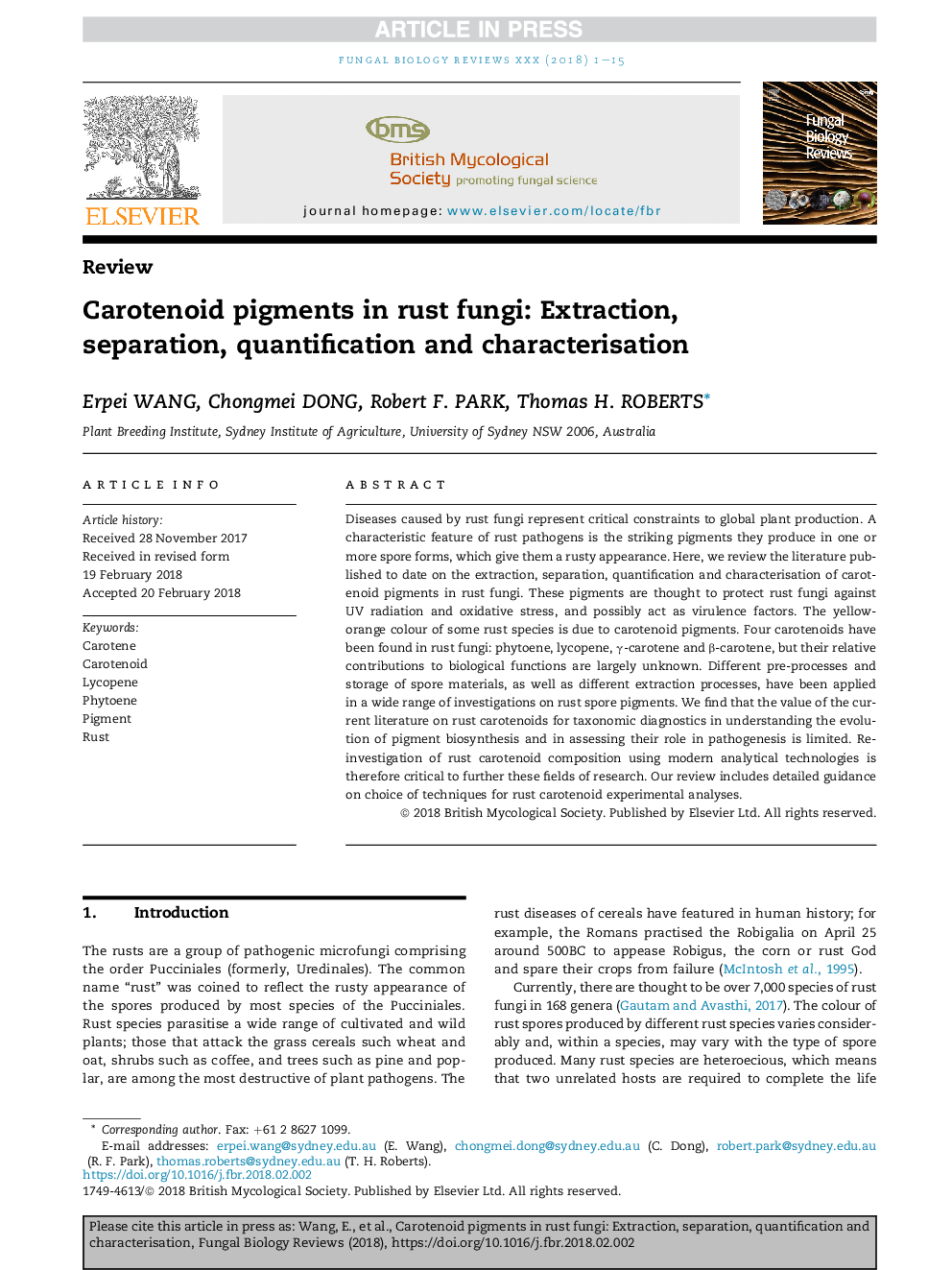| Article ID | Journal | Published Year | Pages | File Type |
|---|---|---|---|---|
| 8470350 | Fungal Biology Reviews | 2018 | 15 Pages |
Abstract
Diseases caused by rust fungi represent critical constraints to global plant production. A characteristic feature of rust pathogens is the striking pigments they produce in one or more spore forms, which give them a rusty appearance. Here, we review the literature published to date on the extraction, separation, quantification and characterisation of carotenoid pigments in rust fungi. These pigments are thought to protect rust fungi against UV radiation and oxidative stress, and possibly act as virulence factors. The yellow-orange colour of some rust species is due to carotenoid pigments. Four carotenoids have been found in rust fungi: phytoene, lycopene, γ-carotene and β-carotene, but their relative contributions to biological functions are largely unknown. Different pre-processes and storage of spore materials, as well as different extraction processes, have been applied in a wide range of investigations on rust spore pigments. We find that the value of the current literature on rust carotenoids for taxonomic diagnostics in understanding the evolution of pigment biosynthesis and in assessing their role in pathogenesis is limited. Re-investigation of rust carotenoid composition using modern analytical technologies is therefore critical to further these fields of research. Our review includes detailed guidance on choice of techniques for rust carotenoid experimental analyses.
Related Topics
Life Sciences
Agricultural and Biological Sciences
Agricultural and Biological Sciences (General)
Authors
Erpei Wang, Chongmei Dong, Robert F. Park, Thomas H. Roberts,
